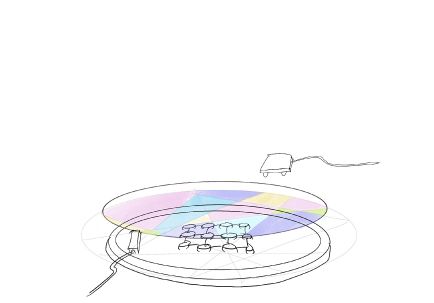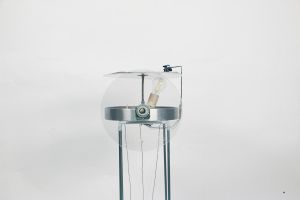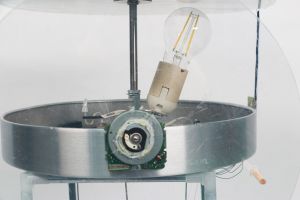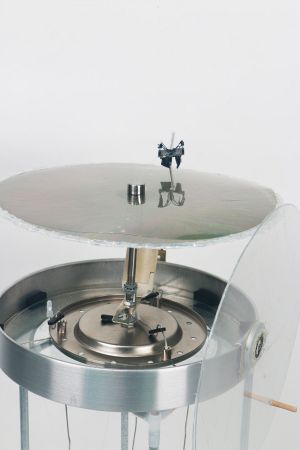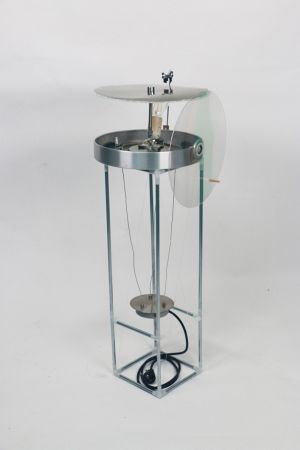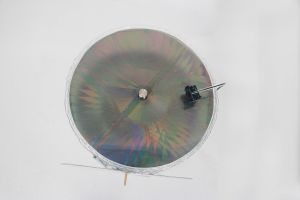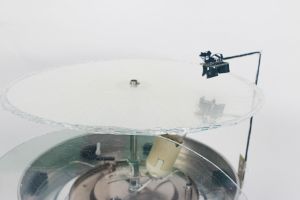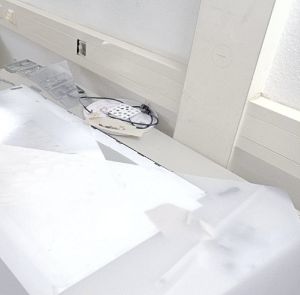CONCEPT
The work is inspired by the record player. I find it mysterious and interesting that people store sounds on a black record. Most records look similar. People cannot visually distinguish which sounds are stored on the record. But when these records are put into certain machines, different music can be played. The process seems magical. How do we store sound on a thin disc? Why can this machine read and play this music? So people burn different textures on the record and the needle of the machine recognises the textures on the record and different textures produce different sounds. So can we replace these textures with another way of playing different sounds?
TECHNIQUE
Based on the idea above, we came up with the idea of using a polariser instead of a black film.
A polarising film filters light so that only light in a particular direction can pass through. The transparent plastic film can change the direction of the light. When we use the polariser to look at a direct light source through the transparent plastic sheet, we can see different colours. So this device has three layers. From bottom to top, the light source, the transparent plastic sheet and the polariser.
Once the black disc part was complete, how could we identify the colours and convert them into sound? We thought of using a colour sensor instead of a needle in a machine. This is because it detects the colours and collects the data via the Arduino. Then we used Max MSP to convert this data into sound.
PROCESS
- While touring the scrapyard, we picked out a few lamps;
- During our experiments we found that the light was too diffuse to be visible through a polarising film;
- With Christian's suggestion, we dismantled a television set and used the film inside to make the light converge (Pic. F&Q_11);
- We put transparent tape on the clear plastic sheet to change the direction of the light so that we could see the different colours under the light through the polariser (Pic. F&Q_6);
- We made a stand to raise the colour sensor to a certain height to get the colour values (Pic. F&Q_8);
- The fill light that comes with the colour sensor affects the colour values collected, so we covered it with insulating tape to make the values more accurate;
- We added a transparent disc to the outside of the device to make it easier for people to interact with it (Pic. F&Q_7);
- We glued a transparent plastic sheet to the polariser and wrapped a layer of glue around the outside to increase friction (Pic. F&Q_8);
- By rotating the outer disc, the transparent plastic sheet is rotated and the colour sensor is able to obtain different colour values (Pic. F&Q_2);
- The Max MSP converts these values into sound.
